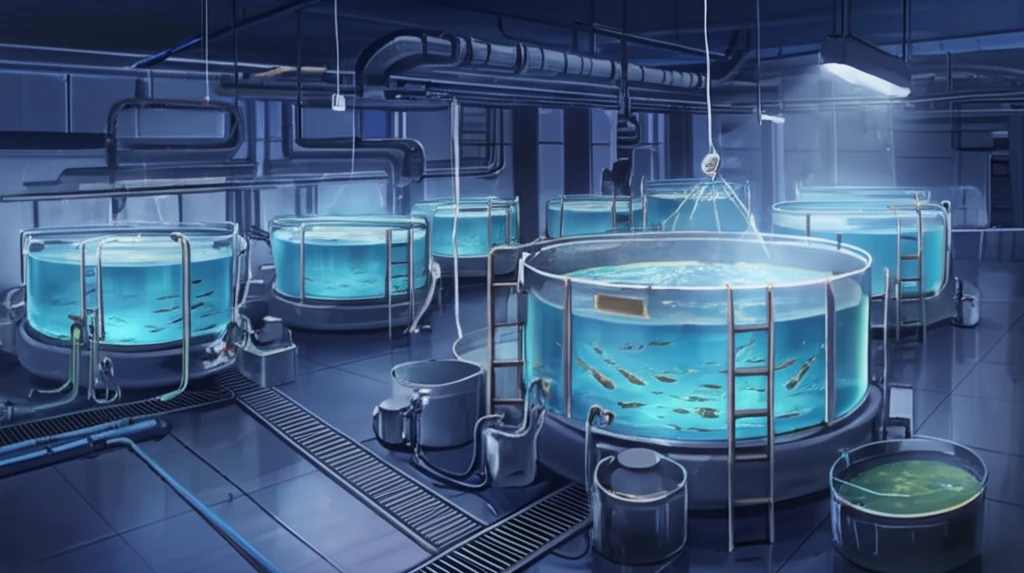
Unlock Sustainable Aquaculture: The Power of Copepod Cultivation
"Dive into the world of intensive copepod culture and discover how this innovative approach is revolutionizing live feed production for marine species."
For years, the aquaculture industry has grappled with a significant challenge: providing adequate and nutritious feed for the delicate early stages of marine species. The success of hatchery production hinges on the availability of suitable live feed, and copepods, tiny crustaceans naturally consumed by marine fish larvae, have emerged as a promising solution. Their small size, nutritional content, and digestibility make them an ideal first food for many commercially important species.
However, relying on copepods as a primary feed source has been challenging due to inconsistent production methods and the inability to scale up production to meet the demands of large-scale aquaculture operations. Traditional methods often fall short in providing a stable and sufficient supply, hindering the growth and development of marine larvae.
Recent research introduces an innovative approach to copepod production – an intensive, large-scale batch culture system designed to produce a consistent and predictable supply of these vital organisms. This breakthrough offers a pathway to overcome the limitations of previous methods, paving the way for more sustainable and efficient aquaculture practices.
The Science Behind Sustainable Copepod Culture

Researchers have developed an indoor batch culture system specifically designed to produce the calanoid copepod Acartia tonsa, a prime candidate for live feed in aquaculture. This system integrates grow-out and egg-production units, operated sequentially by a small team, to ensure a predictable daily output of nauplii (copepod larvae). The core of this design lies in its ability to create a controlled environment, optimizing conditions for copepod growth and reproduction.
- Integrated Design: Combining grow-out and egg-production phases maximizes efficiency and reduces handling.
- Controlled Environment: Indoor operation allows for precise control of temperature, light, and water quality.
- Sequential Operation: A streamlined workflow allows a small team to manage the entire process effectively.
- Consistent Output: The system is designed to deliver a predictable daily supply of nauplii.
The Future of Aquaculture with Copepods
This research marks a significant step forward in sustainable aquaculture practices. By demonstrating the feasibility of intensive copepod culture, it offers a pathway to reduce reliance on less sustainable feed sources and improve the overall efficiency of marine species production. As research continues to refine these techniques and optimize production parameters, copepods have the potential to become a cornerstone of sustainable aquaculture, ensuring a stable and nutritious food supply for future generations.
